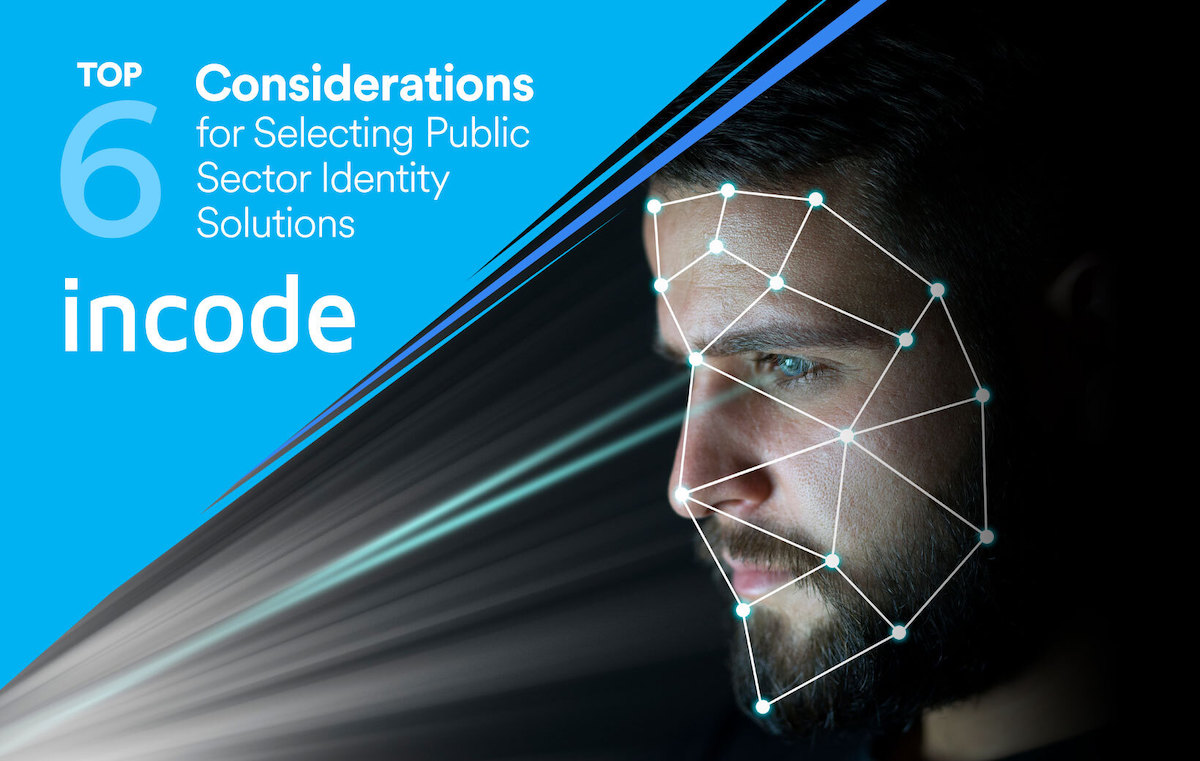Top Six Considerations for Selecting Public Sector Identity Solutions
Leading government agencies are digitizing and streamlining traditional identity verification processes—from financial professional background checks to driver’s license renewals to entitlement applications. With digital processes, constituents do not need to carry their personal documents to application centers, travel to remote offices, or wait in line for a clerk to manually process their applications. This reduces staff burden, mitigates risk, and improves the constituent experience by providing services more quickly, conveniently, and securely than traditional in-person methods.
However, government agencies must thoughtfully plan digital programs to drive trust and adoption with constituents for program success. Constituents will be reluctant to participate in a digital transformation initiative if they do not trust the agency to properly handle their personal information. If new programs draw low adoption, subsequent programs and complementary services may be negatively impacted as well.
After nearly two decades of serving in public sector organizations alongside government employees, constituents, and private service providers, I have a comprehensive understanding of industry pain points, public needs, and best practices for effective program adoption. To provide the benefits of digital transformation to agencies and constituents alike, organizations should consider the following six points when planning to deploy a digital identity solution.
- Trust
Constituents are concerned about how government agencies will use their personally identifiable information (PII). Constituents may fear that an agency will use personal data in a manner they did not consent to and would not approve of, such as to track their movements. Those who fear the misuse of their personal data will resist providing information to government agencies. Both the agency and the identity solution provider must assure the constituent that their data will only be used for a specific delineated purpose, and that their privacy will always be protected. The identity solution itself plays a critical part in easing constituent concerns as it provides an audit trail of all data usage and prevents unauthorized individuals from accessing a constituent’s account. - Ease of use
A difficult-to-use identity solution weakens adoption for both constituents and agencies, and any digital program will fail without effective adoption. The entire process must be intuitive and easy to use to ensure all users and administrators can securely gain access regardless of their technical skill level. In addition, the identity solution needs to easily integrate with agency systems to create a holistic experience. - Outstanding performance
While ease of use is crucial, the identity solution cannot sacrifice performance. The solution must be highly accurate and able to detect fraudulent identity enrollment attempts. Digital identity verification incorporates artificial intelligence (AI) and machine learning (ML) to detect fraud more reliably than human verification, as described in the fifth consideration below. Digital identity verification is also subject to measurement and testing. Accredited testing authorities, such as the U.S. National Institute of Standards and Technology (NIST), can measure the performance of digital identity verification solutions in areas such as facial recognition accuracy and detection of biometric spoofing attempts (liveness detection). - Limited sensitive data storage and movement
Choosing an identity solution that limits data movement—or that does not store PII at all—will improve trust, privacy, and ease-of-use metrics. Limiting information (e.g., biometric data) to the device itself, or not retaining these data in the first place, reduces the chance of sensitive data being moved or shared outside intended boundaries. The identity solution should limit data interchange between systems to simple queries and affirmative/negative responses without transmitting sensitive data or requiring (or permitting) sensitive data to leave a government agency’s secure environment. Additionally, a solution that processes on the edge (i.e., offline, and completely within the device) improves the speed and convenience of a transaction, enabling users to retrieve resources faster and without the need for Wi-Fi or cellular access. - Elimination of human access to data
There are three core benefits to enabling a fully automated identity verification system and eliminating human access to sensitive data. First, a fully automated identity verification system provides more reliable decision-making than humans, as noted in the third consideration above. Second, the system protects constituent privacy and reduces fraud by eliminating human access to sensitive PII. Finally, the system provides instantaneous results, driving constituent satisfaction. Constituents do not need to wait for people in remote call centers to manually verify results. Manual verification can take minutes, days, or even weeks, and these delays have led to constituent dissatisfaction in identity verification implementations. - Reduced cost of ownership and compliance with evolving data laws
Selecting an identity solution with flexible deployment options (e.g., cloud, on-premises, and/or hybrid) enables organizations to evolve and remain compliant with data regulations without drastic architecture overhauls. Public sector entities are in varying stages of digital transformation, and architectures change over time as organizations move to more cloud-based services. At the same time, data laws are evolving faster in some jurisdictions than in others, and new data residency requirements may need to be enforced, or older data laws may need to be respected. A robust, flexible identity solution will easily accommodate this without high-cost, time-consuming overhauls.
Incode is dedicated to securely expanding access to public services through our omnichannel identity platform. We have provided public sector solutions that satisfy agencies and constituents by maintaining trust, enabling ease of use, reducing fraud, enhancing security and compliance, and providing real-time results. To learn more about how Incode helps public sector organizations solve identity verification challenges, contact us for a demo.
